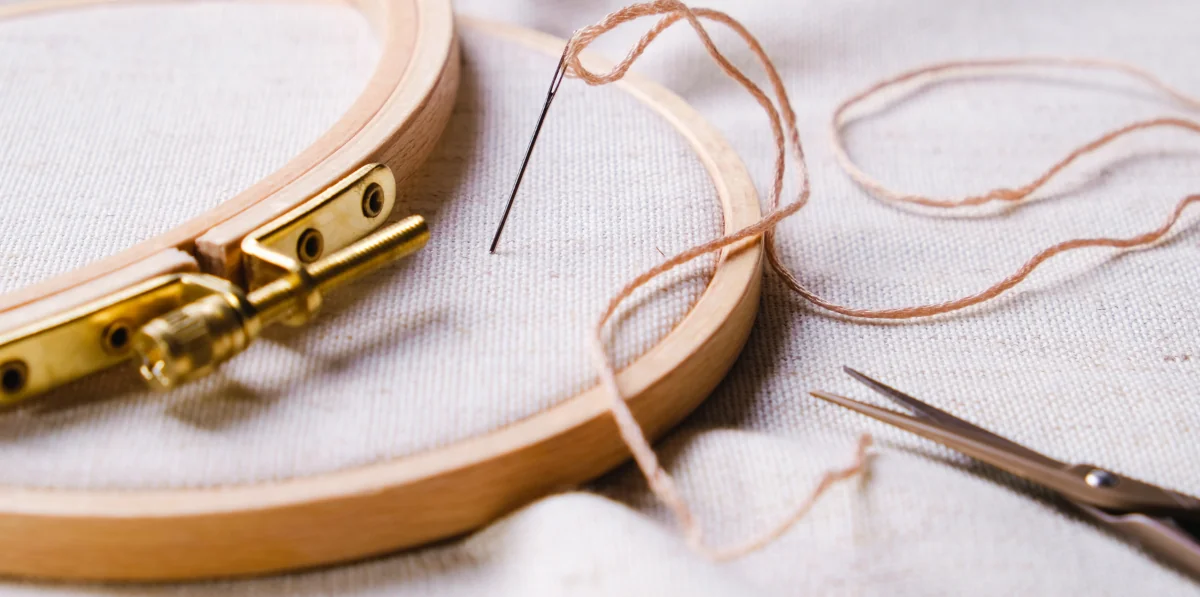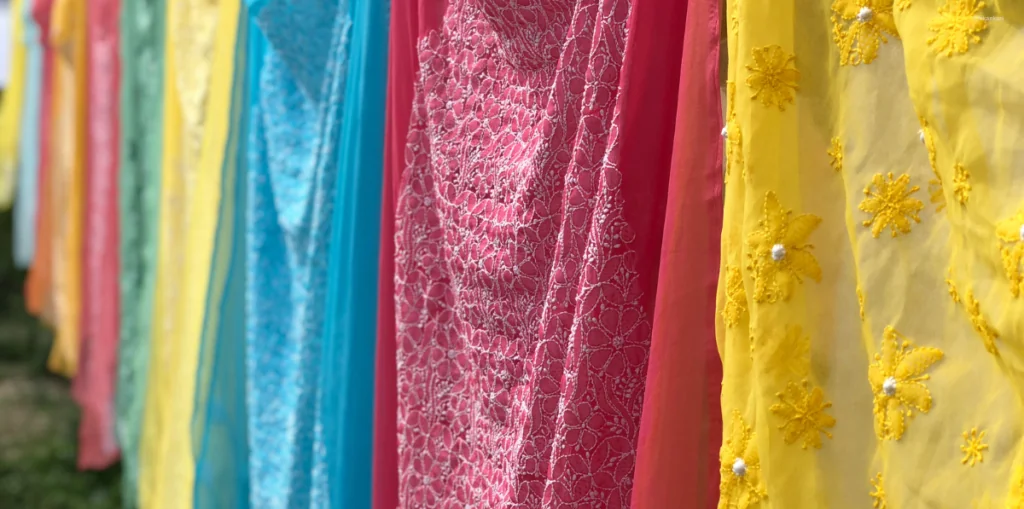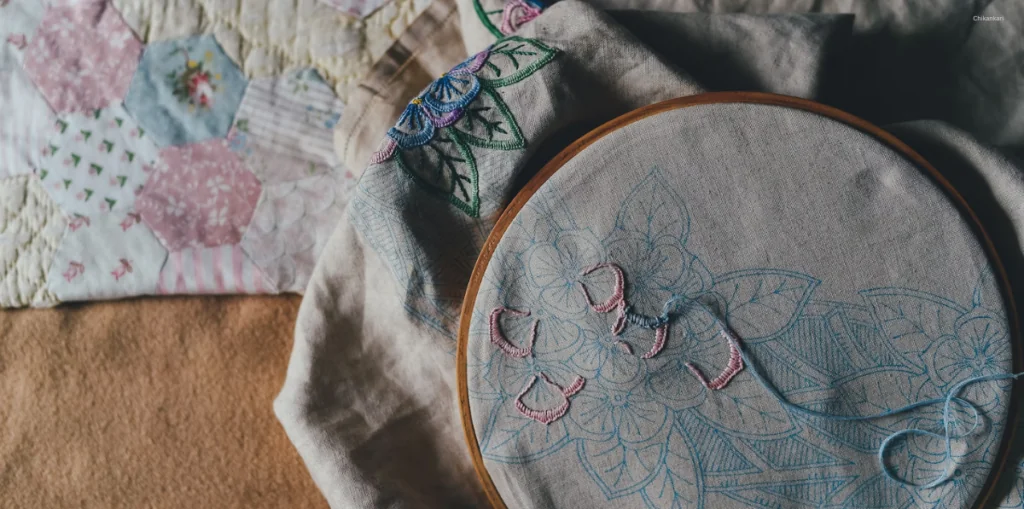
Blog
Chikankari Embroidery: Unveiling the Enchanting Power and Heritage of Timeless Elegance”

Introduction
Chikankari Embroidery is an art form that spans cultures and periods a nd holds a special place in Indian textile tapestries. Among the many types of embroidery in India, Chikankari stands out for its elegance and beauty. Originating from the city of Lucknow, this handicraft is not only a form of decoration but also a symbol of heritage and art. In this blog, we examine the world of Chikankari, exploring its history, technology, cultural significance and current relevance.
A Glimpse into History
Chikankari’s roots trace back to the Mughal generation, with popular perception crediting its advent to the Mughal Empress Nur Jahan, the wife of Emperor Jahangir. Regarded for her keen interest in arts and crafts, Nur Jahan is stated to have added Persian artisans to India, who taught the locals the art of Chikan (that means ’embroidery’ in Persian). Over the years, this craft advanced and became an indispensable part of Lucknow’s culture.
The Mughal impact on Chikankari is present inside the motifs and designs, which are often characterised by Persian-inspired floral patterns, paisleys, and complex vines. The royal patronage in the course of the Mughal era allowed Chikankari to flourish, making it a sought-after textile artwork. Post-Mughal rule, Chikankari persisted to thrive under the Nawabs of Awadh, who had been recognised for their subtle taste and appreciation for fine arts.
Cultural Significance and Evolution
Chikankari is not just an embroidery style; It is a cultural legacy passed down from generation to generation. Historically, this is a craft that women did at home, contributing to the family’s income while preserving the traditions of their ancestors. The social gathering of Chikankari, where women come together and share their stories, increases its cultural value.
In the current era, Chikankari has transcended its traditional history and become a symbol of contemporary elegance and sophistication. Designers have embraced this art form and incorporated Chikankari into their collections, creating fusion clothes that appeal to both tradition and modernity. From saris to kurtas, dresses, tops, and even bridal wear, Chikankari has gained a significant place in the fashion world.

The Art of Chikankari: Techniques and Motifs
Chikankari is known for its delicate and beautiful embroidery, usually done using white threads of various types of fabrics such as cotton, muslin, silk, chiffon and georgette. The process of making Chikankari is labour-intensive and involves several steps:
- Design Tracing: The process begins by drawing the design onto the fabric using washable ink. Designs can be traditional patterns like butis (small floral patterns), paisleys, vines and jaal (net-like patterns).
- Embroidery: Then skilled craftsmen (mostly women) begin the intricate embroidery process. Chikankari uses a variety of stitches, all of which add texture and richness to the design. Some common techniques include:
- Tepchi: A running stitch used to create outlines.
- Bakhiya: A shadow work stitch where the thread is embroidered on the reverse side of the fabric, creating a shadow effect on the front.
- Phanda and Murri: Knotted stitches used to create small floral patterns and motifs.
- Keel Kangan: A stitch resembling a bracelet, used to adorn larger motifs.
- Jaali: A network of open stitches creating a lace-like effect.
- Washing and Finishing: Once the embroidery is finished, the fabric is washed to remove the ink and ensure a clean surface. It also helps in tightening the stitches.
Chikankari in Contemporary Fashion
The biggest appeal of chikankari is its versatility. It can be both simple and gorgeous, suitable for every occasion. Paired with jeans or wide-leg trousers for formal wear, for festive events, Chikankari saris and lehengas with intricate embroidery and embellishments exude elegance.
Many fashion designers played an important role in bringing Chikankari to the international stage. Designers like Abu Jani Sandeep Khosla, Manish Malhotra and Anjul Bhandari included Chikankari in their collections, adding a contemporary touch to it while retaining the traditional elements. Their creations are worn by both actors and actresses, which contributes to this amazing art form.

Challenges and Preservation
Despite its enduring appeal, Chikankari faces challenges to keep it alive. The labour-intensive nature of the craft, combined with low wages for artisans, has led to a decline in the number of skilled embroiderers. Moreover, the introduction of machine-made imitations has also affected the market for original Chikankari handicrafts.
Efforts are being made to solve these problems and protect this heritage. Non-Governmental Organizations (NGOs) and social enterprises work to support talented people by giving them fair pay, training and job opportunities. Measures like Geographical Indication (GI) status for Chikankari help safeguard its authenticity and ensure that only genuine products are sold under this name.
Conclusion
Chikankari is a testament to India’s rich heritage and artistic beauty. Its intricate designs and exquisite craftsmanship continue to fascinate fashion lovers worldwide. As we celebrate this season of embroidery, it is important to support and encourage the talented people who keep these traditions alive. In doing so, we not only preserve beautiful works of art but also honour those who contributed to its charm. It is a celebration of patience, wisdom and creativity, the true embodiment of elegance and tradition. Whether embellished on sarees, kurtas or casual wear, Chikankari remains a symbol of timeless elegance that continues to reflect its magic on the fabric of the era.
Check out more amazing blogs at Souls of India.

